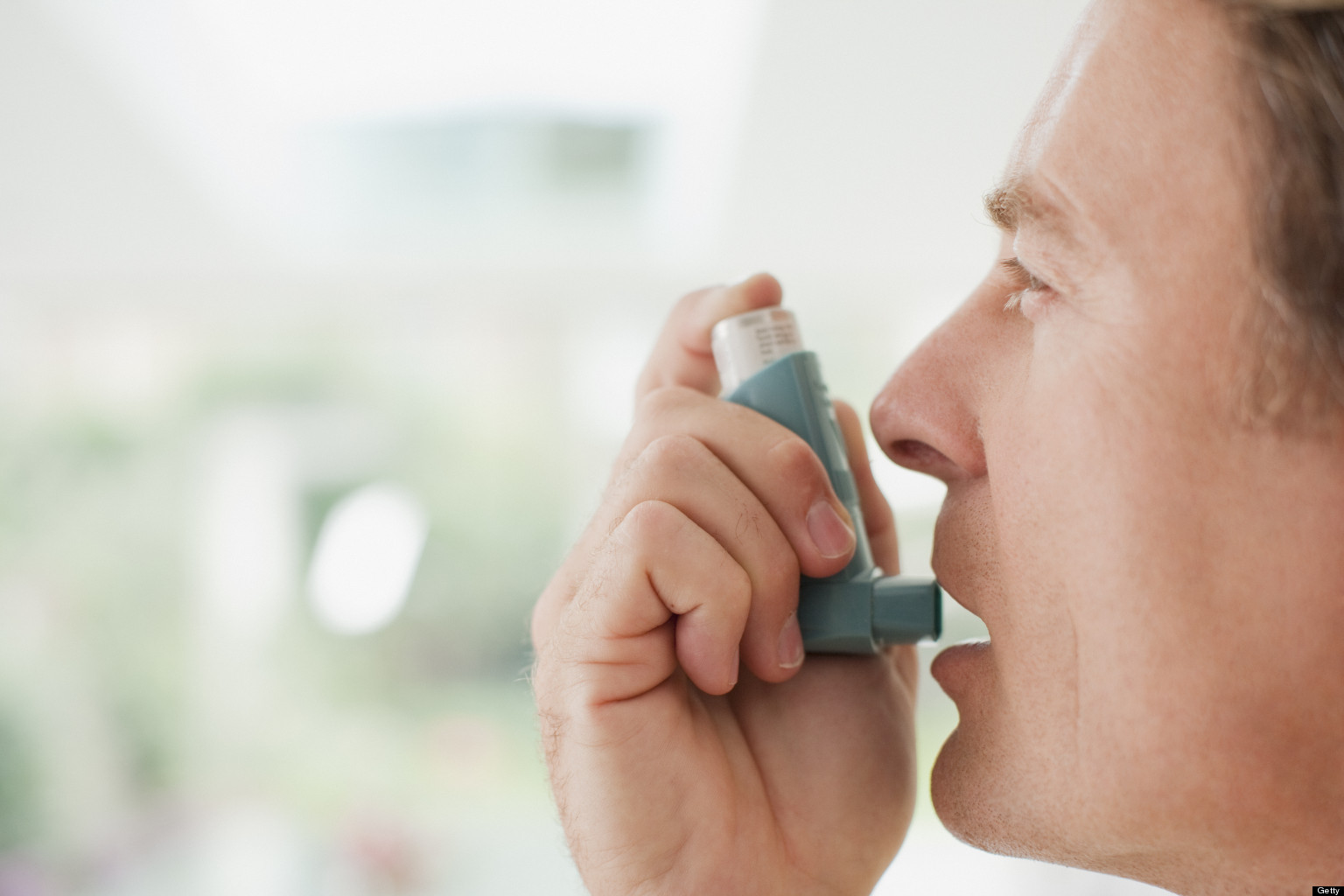Asthma is a disease of the airways. Asthma is a disease of the airways. It is characterized by increased sensitivity of the airways to a number of stimuli- producing spasm of airways; it is also caused by constriction. This ailment causes a pronounced narrowing of the airways, which may be relieved either spontaneously or after treatment.
Asthma can occur at all ages. However, in 50% of the cases it occurs before the age of ten. Asthma may be triggered by exposure to specific allergens and/or external stimuli, in which case it is classified as allergic asthma. Cases of asthma where there is no specific allergen or stimuli implicated, are called idiosyncratic asthma. Asthmatics may have a strong personal or family history of allergies. Asthma is thought to affect close to 3% of the population in most countries. Asthma is an episodic disease that alternates with long periods of normalcy.
Extrinsic or allergic asthma is triggered by a variety of allergen such as dust, smoke, pet dander, chemicals, and certain foodstuff. Underlying respiratory infections, emotional stress, and fatigue can also act as triggers. Viral infections of the respiratory tract may provoke severe asthma. A number of drugs such as aspirin and beta-blockers also act as causes. Quite often more than one factor may be responsible for triggering an episode. The exact mechanism by which the increased reactivity of die airway begins is not clear but the progress of die ailment in its subsequent stages has been well studied. The inflammatory reaction that occurs is mediated by certain cells such as the eosinophils, mast cells, and lymphocytes, as well as by’ certain chemical mediators such as Prostaglandin and Leukotrienes. The inflammation that occurs leads to an exudation of inflammatory material and leads to narrowing and blockage of the airway, producing the typical symptoms of the disease. Air also gets trapped within the airways producing a hyper-inflated chest The severity of the obstruction is not uniform and different parts of the airway may be affected in varying degrees.
ADVERTISEMENTS:
The three typical symptoms of asthma are: breathlessness (dyspnoea), cough, and wheezing. Usually all three symptoms may be evident during an acute attack. The accessory muscles of respiration may be active. The presence of a pulsus paradoxus (a type of pulse) and the presence of significant activity of the accessory muscles of respiration, indicate that the episode is severe. The patients may complain of a feeling of tightness the chest – often at the start of an episode. During an episode the patient may lean forward and breathe long and hard. In severe cases the wheeze may appear to reduce and the patient may become cyanosed with severe fatigue and narrow, shallow respirations. A silent chest in a severe episode of asthma is often an ominous sign. Severe cases may lead to status asthmaticus (a form of treated but uncontrolled severe asthma) and eventually respiratory failure.
A typical feature of an asthma attack is its reversibility. Administering a bronchodilator and estimating the improvement in the patient’s expiratory volume during the first second of expiration (FEV1), is a simple and effective method of diagnosis. During an acute attack, an examination of the arterial blood gases would indicate the severity of the episode. A chest X-Ray may be necessary to indicate a hyperventilated chest. It also helps differentiate from other causes of breathlessness such as cardiac failure. The sputum could be thick and viscous and may indicate eosinophils and what are called Char cot-Ley den crystals. The effectiveness of therapy is monitored by assessing the PEFR (Peak Expiratory Flow Rate). Estimation of blood and sputum eosinophil counts (elevated), and raised levels of serum Immunoglobin-E, are often useful supportive evidence but are not specific. A Pulmonary Function Testing may indicate an obstructive pattern of airway disease.
A variety of drugs are used in the treatment of asthma. These include the Beta-agonists, the Methylxanthines, and Corticosteroids. Drugs such as Salbutamol, Terbutaline and Salmetrol (long acting) belong to the group of adrenergic stimulants; while Theophylline and its various salts belong to die family of Methylxanthines. Anti-cholinergic drugs are also useful in treating acute episodes but are not used as often. Steroids reduce the inflammation within the airways in asthma and are highly effective. The drugs may be administered either by inhalation, orally, or by injections. Treatment has to continue until the episode has completely resolved; after that many patients may require a small dose of bronchodilator, usually administered by an inhaler for a prolonged period.
ADVERTISEMENTS:
Mast cell stabilising agents such as Cromolyn Sodium and Nedocromil sodium help restrict the de-granulation of mast cells, and prevent the release of the mediators of inflammation. Thus they are more useful when given as prophylactics rather than during the acute episode. Oxygen may need to be given during severe attacks; severe attacks may warrant antibiotics. Desensitisation or immuno-therapy with extracts of the suspected allergens has been tried and may become widely acceptable in the future. The prognosis of asthma remains good with as many as 60%-80% of those who have the disease being able to lead normal lives without any significant disruptions. But between 10%-20% of patients continue to have severe attacks throughout their lives. Fortunately asthma is not a progressive disease. The mortality rate among asthma Patients is low though it has been on the rise of late.
Avoiding known triggers or allergens can prevent asthma. Educating the patient, and regular follow-up are also known to improve prove the prognosis. Immuno-therapy and treatment Sodium Cromoglycate may be useful in some cases.

